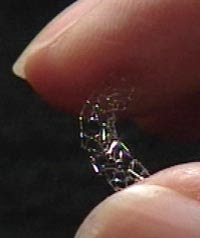Serruys, Patrick W. et al. "Randomized comparison of implantation of herapin-coated stents with balloon angioplasty in selected patients with coronary artery disease." Lancet. 352. August 29 (1998): 673-81. Print.
http://www.sciencedirect.com/science?_ob=ArticleURL&_udi=B6T1B-3TW6XCJ-3&_user=489286&_rdoc=1&_fmt=&_orig=search&_sort=d&_docanchor=&view=c&_searchStrId=1121249342&_rerunOrigin=scholar.google&_acct=C000022678&_version=1&_urlVersion=0&_userid=489286&md5=4dfecd94f54de1b53aad89806b064f43
This article, from the August 1998 volume of The Lancet, one of the world’s leading general medical journals, presents yet another study on the effectiveness of stents versus balloon angioplasties. As has been previously determined, stenting has a preventive effect on restenosis and acute closure and therefore is more desirable than balloon angioplasties. This study also confirms what was discussed in the previous post with regards to the combined use of two anitplatelet drugs, aspirin and ticlopidine. This combination is safe and effective in preventing stent thrombosis.
Also assessed in this study was the relative cost-efficacy of stent implantation and balloon angioplasty. Answers are not yet conclusive. Over 12-month follow-up, a strategy of elective stenting with heparin-coated stents is indeed more effective but also significantly more costly than balloon angioplasty. The assessment of cost-effectiveness is never without some debate. Typically, cost-effectiveness analysis concentrates on life-years gained and quality-adjusted life-years gained. Therefore, long-term follow-up over many years is necessary to fully assess the relative value of a particular intervention. At the time this article was published, there had not been enough time for long-term follow-up. Nevertheless, we have good reason to believe and other data to support the notion that stent-implantation is superior to balloon angioplasty in the long-term as well.


No comments:
Post a Comment